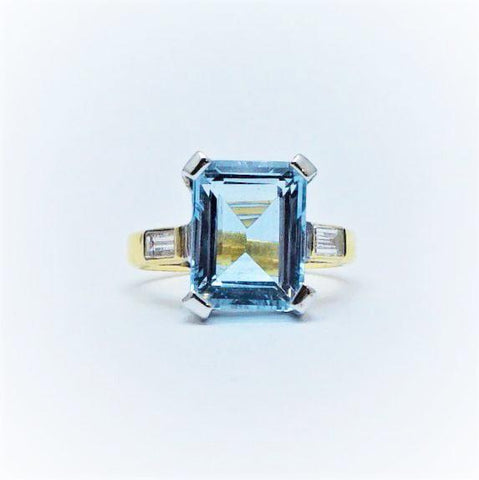The two birthstones of March
March has two birthstones – aquamarine and bloodstone.
Aquamarine
Aquamarines vary in colour from deep blue to blue-green of different strengths, caused by traces of iron.
The aquamarine – also known as the “poor man’s diamond” – is a form of the mineral beryl that also includes other gemstones such as the emerald, morganite, and heliodor. Beryl consists of four elements: beryllium, aluminum, silicon, and oxygen. Beryl occurs as free six-sided crystals in rock veins unaffected by shock and weathering that otherwise destroy gem deposits. It is a relatively hard gem, ranking 7 ½ on the MOH’s scale.
The name Aquamarine comes from the Latin aqua marinus, meaning "water of the sea," and refers to its sparkling ocean-like colour. Aquamarines were believed to have been found in the jewel caskets of sirens, washed ashore from the depths of the sea. They were considered sacred to Neptune, god of the sea. This association with the sea made it the sailors’ gem, promising protection and prosperity on their voyages.
Beginning in the Roman period, the aquamarine was believed to possess medicinal and healing powers, curing ailments of the stomach, liver, jaws, and throat. During the Middle Ages, it was believed to be an effective antidote against poison. Aquamarines were thought to be the source of power for soothsayers, and used it for telling fortunes and answering questions.

The second birthstone for March is the bloodstone, also known as heliotrope. This particular form of quartz, known as cryptocrystalline quartz, exists as a mass of tiny quartz crystals formed together in large lumps that show no external crystal form, yet each of the component crystals that make up the mass is a genuine crystal. This quartz variety is also called chalcedony. Green chalcedony spotted with flecks of red is known as bloodstone. Bloodstone is found embedded in rocks, or as pebbles in riverbeds.
The bloodstone is a favoured material for carving religious subjects, particularly the Crucifixion. According to legend the bloodstone was believed to have formed during the crucifixion of Christ. A Roman soldier-guard thrust his spear into Christ’s side and drops of blood fell on some pieces of dark green jasper lying at the foot of the cross, and the bloodstone was created.
In the Middle Ages the bloodstone was believed to hold healing powers, particularly for stopping nosebleeds. Ancient alchemists used it to treat blood disorders, such as blood poisoning and the flow of blood from a wound. Bloodstone was also believed to draw out the venom of snakes.






